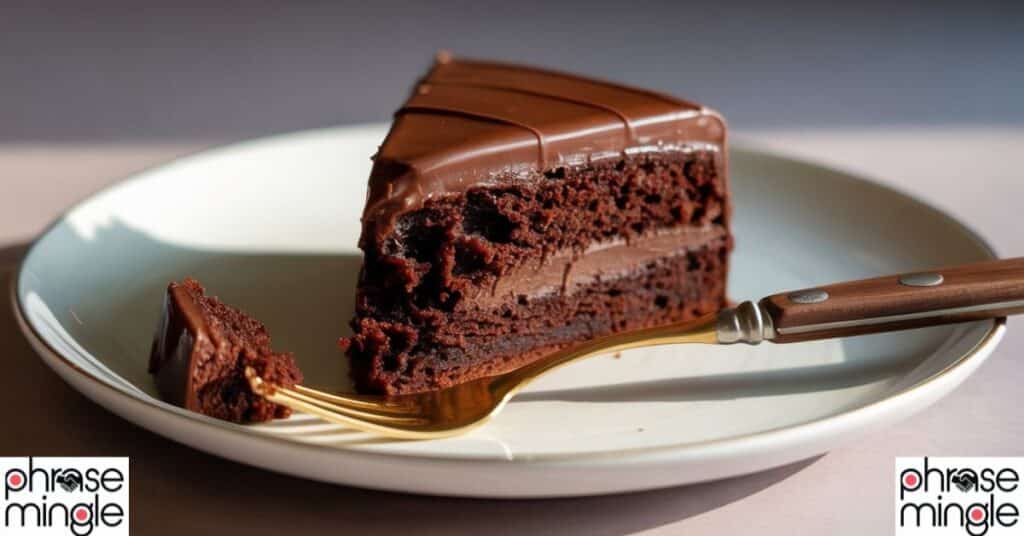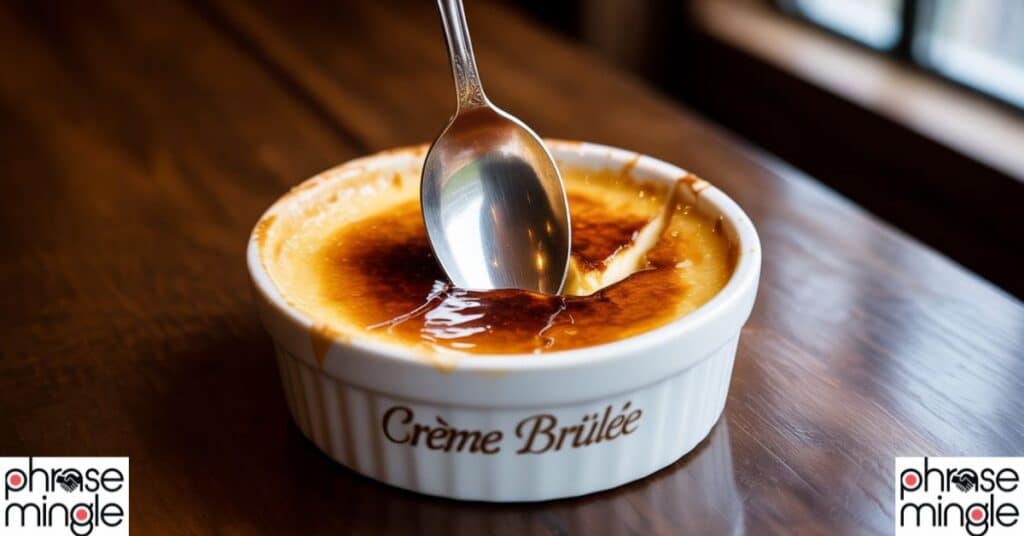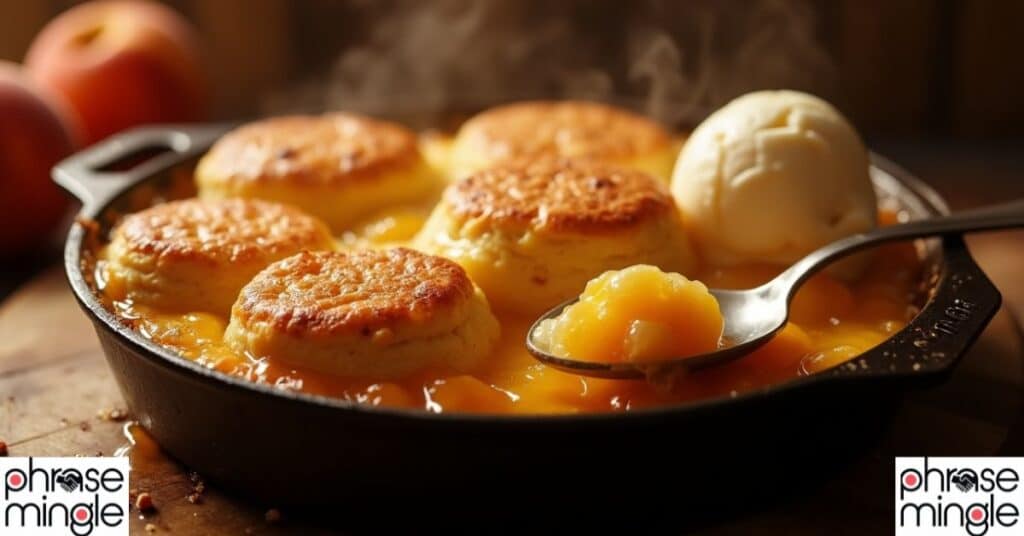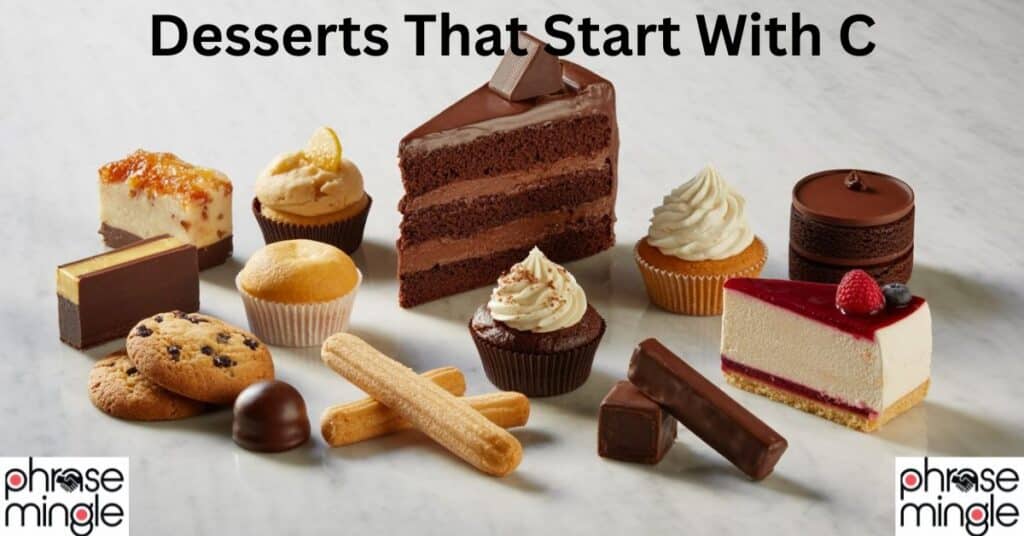Desserts that start with C are among the world’s most loved from gooey chocolate cake to crisp crème brûlée. These sweet treats range from classic cookies and cupcakes to global delights like cannoli and clafoutis.
In this guide explore 60 Desserts that start with C that blend comfort, elegance and cultural flair perfect for sparking your next baking adventure.
Classic American & European Desserts that start with C
American and European dessert traditions have given us some of the most recognizable Desserts that start with C in the world. These treats have stood the test of time because they balance familiar flavors with satisfying textures.
From the perfect chocolate chip cookies to towering layer cakes these desserts represent generations of refined recipes and cherished memories.
1. Cheesecake: The Crown Jewel of Desserts that start with C
Cheesecake reigns supreme among desserts starting with C and for good reason. This rich creamy masterpiece has conquered hearts worldwide with its velvety texture and endless flavor possibilities.
The New York style cheesecake stands as America’s contribution to dessert royalty. Made with cream cheese, eggs and heavy cream it achieves that dense luxurious consistency that’s become the gold standard. The secret lies in the slow low temperature baking process that prevents cracks and ensures even cooking throughout.
Italian cheesecake takes a different approach using ricotta cheese instead of cream cheese. This creates a lighter slightly grainy texture that’s less overwhelming than its American cousin. Traditional Italian versions often include citrus zest and sometimes candied fruits.
Key Cheesecake Facts:
- Philadelphia cream cheese was invented in 1872 revolutionizing cheesecake making
- New York cheesecake typically weighs 2-3 pounds per cake
- The water bath method prevents cracking in 85% of cases
- Cheesecake originated in ancient Greece not New York
2. Chocolate Cake: The Ultimate Comfort Dessert

Nothing says celebration quite like a moist chocolate cake with its rich chocolate flavor. This dessert has evolved from simple cocoa dusted sponges to elaborate multi layer creations that showcase chocolate in all its glory.
The perfect spongy chocolate cake depends on understanding cocoa’s chemistry. Dutch processed cocoa creates a milder smoother flavor while natural cocoa provides that intense slightly acidic chocolate punch. Professional bakers often combine both types to achieve complex flavor profiles.
Devil’s food cake represents the pinnacle of chocolate cake achievement. Its chocolatey flavor comes from using both cocoa powder and melted chocolate plus the addition of coffee which intensifies the chocolate without making it taste like coffee.
Modern Chocolate Cake Variations:
- Flourless chocolate cake: Gluten free option with intense chocolate concentration
- Molten chocolate cake: Individual portions with liquid centers
- Red velvet cake: Subtle chocolate with tangy cream cheese frosting
- German chocolate cake: Features coconut pecan frosting
3. Cookies: The World’s Favorite Handheld Treat
Cookies represent perhaps the most diverse category of Desserts that start with C. From crispy gingersnaps to chewy oatmeal varieties cookies adapt to every culture’s preferences while maintaining their essential appeal as portable shareable treats.
The science behind perfect cookies involves understanding how ingredients interact. Butter creates tenderness while brown sugar adds moisture and chewiness. White sugar promotes spreading and crispiness. The ratio of these ingredients determines whether you’ll get a thin crispy cookie or a thick chewy one.
Cookie dough consistency matters more than most home bakers realize. Room temperature butter creams properly with sugar creating air pockets that give cookies their texture. Cold butter won’t incorporate well while melted butter creates dense flat cookies.
4. Chocolate Chip Cookies: America’s Accidental Masterpiece
Chocolate chip cookies hold a special place in American culture and their creation story is as sweet as the cookies themselves. Ruth Wakefield invented them in 1938 at the Toll House Inn when she added broken pieces of Nestlé chocolate to her cookie batter expecting them to melt and create chocolate cookies.
The perfect chocolate chip cookie balances several elements: the cookie base should be tender but not cake like the chocolate chips should remain intact with slight melting around the edges and the flavor should showcase both the vanilla butter cookie and the chocolate.
Professional Tips for Perfect Chocolate Chip Cookies:
- Chill dough for 2-24 hours before baking
- Use a combination of brown and white sugars (ratio 3:1)
- Slightly underbake for chewy texture
- Add a pinch of sea salt to enhance flavors
Studies show that chocolate chip cookies trigger powerful nostalgia responses making them effective comfort foods during stressful times.
5. Cupcakes: Individual Celebrations in Cake Form
Cupcakes transformed from practical portion control solutions to artistic canvases for creative bakers. Their individual serving size makes them perfect for parties and their frosting surface provides endless decoration possibilities.
The cupcake boom of the 2000s elevated these treats from children’s birthday fare to gourmet desserts. High end bakeries began creating sophisticated flavor combinations like salted caramel, lavender honey and bourbon vanilla.
Proper cupcake technique involves filling liners only 2/3 full to prevent overflow, baking at the correct temperature (usually 350°F) and cooling completely before frosting. The cake to frosting ratio should be approximately 1:1 for optimal balance.
6. Carrot Cake: The Vegetable That Became Dessert Gold
Carrot cake proves that vegetables can create extraordinary desserts. This moist spiced cake gained popularity during World War II when sugar rationing made carrots a practical sweetener substitute.
The magic of carrot cake lies in its moisture content. Grated carrots release moisture during baking creating an incredibly tender crumb. Oil rather than butter contributes to this moistness while allowing the spice flavors to shine through.
Traditional carrot cake spices include cinnamon nutmeg and sometimes ginger or allspice. Cream cheese frosting became the standard pairing because its tangy flavor balances the cake’s sweetness perfectly.
Essential Carrot Cake Components:
- Grated carrots: Should be finely grated for even distribution
- Oil: Vegetable or canola oil works best
- Spices: Cinnamon is mandatory others optional
- Nuts: Pecans or walnuts add texture contrast
- Cream cheese frosting: The classic pairing
7. Crème Brûlée: French Elegance in a Ramekin

Crème brûlée represents the pinnacle of custard based desserts. This French creation combines silky vanilla custard with a contrasting caramelized sugar top that cracks dramatically under a spoon.
The technique for perfect crème brûlée requires patience and precision. The custard base involves slowly heating cream with vanilla then tempering it into egg yolks to prevent curdling. The mixture bakes in a water bath at low temperature to ensure gentle even cooking.
The signature caramelized top requires either a kitchen torch or broiler. Professional chefs prefer torches because they provide better control over the caramelization process. The sugar should form a thin even layer that hardens into glass like brittleness.
8. Cinnamon Rolls: Weekend Morning Perfection
Cinnamon rolls transform simple yeast dough into spirals of sweet spiced heaven. These pastries require time and technique but reward bakers with tender flaky layers infused with cinnamon sugar goodness.
The dough for cinnamon rolls needs proper gluten development through kneading followed by adequate rising time. The filling traditionally combines butter, brown sugar and cinnamon though creative bakers add everything from pecans to cream cheese.
Rolling technique affects the final product significantly. The dough should be rolled into a rectangle of even thickness and the spiral should be tight enough to maintain structure but not so tight that it restricts rising.
9. Chocolate Mousse: Airy French Sophistication
Chocolate mousse achieves the seemingly impossible: intense chocolate flavor in an incredibly light airy texture. This French dessert relies on incorporating air through whipped cream or beaten egg whites creating a foam like consistency that melts on the tongue.
Traditional chocolate mousse contains just chocolate, eggs and sometimes butter. The technique involves melting chocolate carefully then folding in beaten egg whites or whipped cream in stages to maintain the airy structure.
Temperature control is critical when making chocolate mousse. The chocolate must be warm enough to incorporate smoothly but not so hot that it melts the whipped components and deflates the mousse.
10. Cherry Pie: America’s Summer Obsession
Cherry pie represents the essence of American summer baking. Whether made with sweet Bing cherries or tart Montmorency varieties cherry pie captures the brief intense flavor of cherry season in a flaky pastry shell.
The challenge with cherry pie lies in managing the fruit’s moisture content. Fresh cherries release significant liquid during baking which can make the bottom crust soggy. Professional bakers add cornstarch or tapioca to thicken the filling and sometimes blind bake the bottom crust partially.
Lattice tops aren’t just decorative on cherry pies they allow steam to escape while letting the filling bubble and thicken properly. The visual contrast between red cherries and golden pastry makes cherry pie one of the most photogenic desserts.
IF YOU WANT TO READ ABOUT DESSRTS THAT STRAT WITH “O” CLICK HERE
11. Castella: Japanese Sponge Cake Perfection
Castella represents Japanese precision applied to European sponge cake technique. Introduced by Portuguese merchants in the 16th century this cake evolved into a distinctly Japanese dessert with an incredibly fine moist crumb.
The technique for castella involves beating eggs and sugar for an extended period sometimes 15-20 minutes to create maximum volume and stability. Honey adds moisture and helps achieve the characteristic golden color.
Traditional castella baking uses wooden molds lined with paper and the cakes are cooled upside down to maintain their height. The result is a cake so tender it almost melts in your mouth.
12. Chè: Vietnamese Dessert Soup Variations
Chè encompasses a entire category of Vietnamese desserts that blur the line between soup and pudding. These sweet soups can be served hot or cold and typically combine various textures like chewy tapioca creamy coconut milk and tender beans or fruits.
Popular chè varieties include chè ba màu (three color dessert) with layers of mung beans, red beans and green jelly and chè cung đình (royal dessert) which features longan fruit and tapioca pearls in coconut milk.
The beauty of chè lies in its adaptability to seasonal ingredients and personal preferences. Street vendors in Vietnam offer dozens of variations each with its own combination of flavors and textures.
13. Cendol: Southeast Asian Shaved Ice Delight
Cendol brings together shaved ice, coconut milk, palm sugar syrup and distinctive green rice flour jelly noodles to create a refreshing dessert perfect for tropical climates.
The green jelly noodles are made from rice flour colored with pandan leaves which give cendol its characteristic green hue and subtle vanilla like flavor. These noodles are pushed through a special strainer to create their unique worm like shape.
Cendol represents the perfect balance of textures: creamy coconut milk, crunchy ice, chewy jelly noodles and sometimes additional toppings like red beans or corn kernels.
14. Cassava Cake: Filipino Root Vegetable Transformation
Cassava cake demonstrates Filipino ingenuity in transforming humble root vegetables into celebratory desserts. This dense slightly chewy cake showcases cassava’s natural sweetness while incorporating coconut milk and condensed milk for richness.
Traditional cassava cake preparation involves grating fresh cassava root though modern versions often use frozen grated cassava for convenience. The batter typically includes eggs, coconut milk, condensed milk and sometimes cheese on top.
The finished cake has a unique texture denser than regular cake but more tender than pudding. It’s often served at Filipino celebrations and has become a symbol of resourceful home cooking.
15. Canelé: Bordeaux’s Caramelized Mystery

Canelé from Bordeaux, France represents one of the most technically challenging desserts to master. These small fluted pastries feature crispy caramelized exteriors surrounding soft custard like centers.
The traditional recipe requires rum, vanilla, milk, eggs, flour and sugar but the technique involves specialized copper molds and careful temperature control. The molds are coated with beeswax and butter then heated to very high temperatures before adding the batter.
The contrast between the crunchy caramelized shell and the tender interior makes canelé one of the most texturally interesting desserts in French patisserie.
16. Clafoutis: French Countryside Cherry Custard
Clafoutis originated in the Limousin region of France as a rustic way to showcase fresh cherries. This baked custard dessert falls somewhere between a thick pancake and a light cake with whole cherries suspended throughout.
Traditional clafoutis uses unpitted cherries because the pits add almond like flavor during baking. The batter is simple eggs, milk, flour, sugar and a pinch of salt but the technique of gradually incorporating ingredients prevents lumps and ensures smooth texture.
Clafoutis is best served warm from the oven when the custard is still slightly jiggly in the center. It deflates as it cools so timing is important for the best presentation.
17. Cremeschnitte: Austrian Cream Slice Elegance
Cremeschnitte represents Austrian pastry craftsmanship at its finest. This dessert features layers of crispy puff pastry alternating with rich vanilla pastry cream often topped with powdered sugar or fondant.
The key to excellent cremeschnitte lies in the pastry cream’s consistency and the puff pastry’s crispness. The cream should be thick enough to hold its shape but smooth enough to cut cleanly. The pastry must remain crispy despite the moisture from the cream.
Assembly requires precision to create even layers and clean edges. Professional versions often use frames or rings to maintain perfect rectangular shapes.
18. Canestrelli: Italian Butter Cookies from Liguria
Canestrelli are delicate Italian butter cookies from the Liguria region recognizable by their flower like shape with a hole in the center. These cookies are incredibly tender and crumbly almost melting on the tongue.
The traditional recipe uses only butter, flour, hard boiled egg yolks and powdered sugar. The egg yolks are pushed through a fine sieve to ensure smooth texture and the dough is handled minimally to prevent toughness.
Canestrelli are traditionally dusted with powdered sugar and served with coffee or wine. Their delicate nature makes them perfect for elegant occasions.
19. Christmas Pudding: British Holiday Tradition
Christmas pudding embodies British holiday traditions in dense fruit laden form. This steamed pudding contains dried fruits, nuts, spices and often a generous splash of brandy or rum.
Traditional Christmas pudding preparation begins months before Christmas allowing flavors to meld and develop complexity. The pudding is steamed for hours then aged in a cool dark place with occasional additions of alcohol.
The characteristic dark color comes from brown sugar molasses or caramelized sugar while the dense texture results from breadcrumbs and suet (though modern versions often substitute butter).
20. Capirotada: Mexican Bread Pudding with Soul
Capirotada transforms day old bread into a deeply flavored dessert that’s traditionally served during Lent in Mexico. This bread pudding incorporates cinnamon, cloves, brown sugar syrup and often cheese creating a unique sweet savory combination.
The syrup for capirotada is made by caramelizing piloncillo (Mexican brown sugar) with cinnamon and cloves then thinning with water. This creates a complex molasses like flavor that penetrates every layer of bread.
Traditional versions include white cheese (like Monterey Jack) peanuts, and raisins creating textural contrast throughout the pudding. The dish is served warm and represents comfort food at its finest.
21. Chocolate Truffles: Ganache Luxury in Bite Size Form
Chocolate truffles represent the pinnacle of chocolate confectionery combining simplicity with sophistication. These small round chocolates traditionally consist of a ganache center coated in chocolate cocoa powder or nuts.
Classic ganache for truffles uses a 2:1 ratio of chocolate to heavy cream heated together until smooth. The mixture cools to a pipeable consistency then is shaped into balls and coated. The quality of chocolate directly affects the final product higher cocoa content creates more intense flavor but requires careful handling.
Types of Chocolate Truffles:
- French truffles: Dusted with cocoa powder irregular shapes
- Swiss truffles: Smooth, round often dipped in tempered chocolate
- American truffles: Various shapes often with additional flavorings
- European truffles: Traditional recipes with minimal ingredients
Temperature control during truffle making is critical. The ganache must be cool enough to hold its shape but warm enough to pipe smoothly. Professional chocolatiers often work in temperature controlled environments.
22. Chocolate Fondue: Interactive Dessert Experience
Chocolate fondue transforms dessert into a social experience. This Swiss invention involves melting chocolate with cream to create a smooth dippable consistency perfect for fruits marshmallows and other treats.
The ideal fondue chocolate combines good melting properties with flavor complexity. Semi sweet or bittersweet chocolate works best often enhanced with heavy cream, butter and sometimes liqueurs like Grand Marnier or Kirsch.
Maintaining proper temperature is crucial for chocolate fondue success. Too hot and the chocolate becomes grainy; too cool and it becomes thick and unworkable. Fondue pots with adjustable heat sources solve this problem.
23. Chocolate Soufflé: The Dessert That Demands Timing
Chocolate soufflé represents one of the most technically challenging yet rewarding desserts in classical French cuisine. This dessert relies on properly beaten egg whites to create its characteristic rise and airy texture.
The base for chocolate soufflé typically begins with a roux (butter and flour) mixed with milk to create a thick sauce. Chocolate and egg yolks are incorporated then carefully folded with beaten egg whites to maintain volume.
Critical Soufflé Success Factors:
- Egg whites: Must be beaten to soft peaks not stiff
- Folding technique: Gentle motions to preserve air bubbles
- Oven temperature: Usually 375°F for proper rise
- Timing: Serve immediately after baking
Soufflés are notorious for collapsing if exposed to temperature changes or vibrations during baking. Professional kitchens often prepare the base hours ahead then fold in egg whites and bake to order.
24. Chocolate Lava Cake: Molten Center Magic
Chocolate lava cake achieved widespread popularity in the 1990s offering the drama of a liquid chocolate center within a firm outer cake. This dessert requires precise timing to achieve the perfect balance between set exterior and molten interior.
The technique involves slightly underbaking individual chocolate cakes so the centers remain liquid while the edges set. Some recipes place a piece of chocolate in the center before baking while others rely on precise timing alone.
Serving temperature is crucial too hot and the cake falls apart too cool and the center solidifies. Professional restaurants often par bake lava cakes during prep then finish them to order.
25. Chili Chocolate Brownies: Heat Meets Sweet
Chili chocolate brownies combine chocolate’s richness with chili peppers’ heat creating a complex flavor profile that builds slowly on the palate. This combination has ancient roots in Mesoamerican cuisine.
The key to successful chili chocolate desserts lies in balancing heat levels. Cayenne pepper provides clean heat while chipotle adds smokiness. Ancho chili powder contributes mild heat with fruity undertones.
Chili Chocolate Pairing Guidelines:
- Mild: Ancho or New Mexico chili powder
- Medium: Cayenne pepper or jalapeño powder
- Hot: Habanero or ghost pepper (use sparingly)
- Smoky: Chipotle powder
The chocolate helps temper the heat while the spice enhances chocolate’s natural complexity. Start with small amounts of chili and adjust to taste.
26. Chocolate Covered Strawberries: Romance on a Stick
Chocolate covered strawberries represent the perfect marriage of fruit and chocolate. This simple dessert requires quality ingredients and proper technique to achieve the glossy evenly coated results seen in professional chocolatiers.
The strawberries must be completely dry before dipping any moisture causes the chocolate to seize and become grainy. Room temperature strawberries work best as cold fruit can cause chocolate to crack as it cools.
Tempered chocolate creates the best coating it sets with a satisfying snap and glossy finish. However simple melted chocolate with a small amount of coconut oil can achieve similar results for home cooks.
27. Chocolat Viennois: Austrian Hot Chocolate Dessert
Chocolat Viennois elevates hot chocolate from beverage to dessert status. This rich Austrian creation tops thick dark hot chocolate with whipped cream and sometimes additional garnishes like chocolate shavings or cinnamon.
Traditional Viennese hot chocolate uses real chocolate not cocoa powder creating an intensely rich drink thick enough to coat a spoon. The consistency falls between beverage and liquid dessert.
The whipped cream topping should be lightly sweetened and stable enough to float on the hot chocolate without immediately melting. Some versions add vanilla or rum to the cream for additional complexity.
28. Chocolate Tart: Rich, Dense and Utterly Satisfying
Chocolate tart combines a crisp pastry shell with intensely chocolatey filling creating textural contrast that enhances both components. These tarts range from simple ganache fillings to complex preparations with multiple chocolate layers.
The pastry shell for chocolate tarts often includes cocoa powder for additional chocolate flavor. Blind baking ensures the crust stays crispy even with moist fillings. The shell should be completely cool before adding chocolate fillings.
Ganache based fillings offer the richest chocolate experience while chocolate custard fillings provide lighter texture. Some tarts incorporate both elements in layers for complexity.
29. Chocolate Eclairs: Choux Pastry Meets Chocolate Dreams
Chocolate eclairs showcase the versatility of choux pastry filled with chocolate pastry cream and topped with chocolate glaze. These French pastries require mastering three separate techniques: choux pastry, pastry cream and chocolate glaze.
The choux pastry must be properly cooked to create hollow centers perfect for filling. Undercooked pastry collapses while overcooked pastry becomes tough. The characteristic hollow interior forms from steam created during baking.
Chocolate pastry cream for eclairs should be thick enough to pipe cleanly but smooth enough to flow into the pastry shells. The chocolate glaze should be glossy and flow smoothly over the pastry surface.
30. Custard: Foundation of Countless Desserts
Custard serves as the foundation for numerous classic desserts from simple vanilla puddings to elaborate trifles. Understanding custard making unlocks an entire category of dessert possibilities.
The science behind custard involves egg proteins coagulating at specific temperatures. Egg yolks begin setting around 150°F while whole eggs set at 160°F. Heating too quickly or to excessive temperatures causes curdling the proteins contract and squeeze out liquid.
Basic Custard Ratios:
- Thin custard: 1 egg per cup of milk (sauces)
- Medium custard: 2 eggs per cup of milk (puddings)
- Thick custard: 3-4 eggs per cup of milk (pastry cream)
Tempering prevents curdling by gradually raising egg temperature before adding to hot milk. This technique requires patience but ensures smooth lump free results every time.
IF YOU WANT TO READ ABOUT DESSERTS THAT START WITH “H” CLICK HERE
31. Crème Caramel: Silky Flan Perfection
Crème caramel combines vanilla custard with caramelized sugar to create one of the most elegant desserts in French cuisine. The caramel serves both as flavoring and as a liquid sauce that forms during baking.
Making perfect caramel requires understanding sugar’s behavior at high temperatures. Sugar begins caramelizing around 320°F developing complex flavors as it darkens. The trick is stopping the process at the right moment light amber creates mild flavor, while darker caramel provides more intensity.
The custard base for crème caramel uses whole eggs rather than just yolks creating a firmer texture that unmolds cleanly. Baking in a water bath ensures gentle even cooking that prevents curdling.
32. Chantilly Cream: Sweetened Whipped Cream Elevated
Chantilly cream transforms simple whipped cream into an elegant dessert component. Named after the Château de Chantilly in France this preparation involves whipping cream with sugar and vanilla to soft peaks.
The key to stable Chantilly cream lies in fat content and temperature. Heavy cream (35-40% fat) whips most reliably while chilled cream and utensils help achieve maximum volume. Overwhipping causes butter formation and grainy texture.
Professional pastry chefs often stabilize Chantilly cream with gelatin or cornstarch for desserts that must hold their shape for extended periods. However, traditional versions rely solely on proper whipping technique.
33. Chancellor’s Pudding: British Steamed Pudding Tradition
Chancellor’s pudding represents the height of British steamed pudding tradition. This rich dessert combines sponge cake layers with custard and often includes dried fruits or jam.
Traditional steamed puddings require special pudding basins and careful steam management. The pudding steams for hours creating incredibly moist texture impossible to achieve through other cooking methods. The basin must be properly sealed to prevent water infiltration.
Modern versions sometimes use pressure cookers or slow cookers to achieve similar results with less hands on attention. However, traditional steaming produces superior texture and flavor development.
34. Coconut Pudding: Tropical Comfort in a Bowl
Coconut pudding brings tropical flavors to the comfort food category. This dessert can range from simple coconut flavored vanilla pudding to complex preparations using fresh coconut milk additions.
Fresh coconut milk creates superior flavor compared to canned versions though it requires more work to extract. The milk should be used quickly as it doesn’t store well. Canned coconut milk offers convenience but choose full fat versions for best results.
Coconut Pudding Variations:
- Thai style: With palm sugar and pandan flavoring
- Caribbean: Often includes rum or lime zest
- American: Usually vanilla based with coconut addition
- Filipino: Often includes rice flour for different texture
Toasted coconut flakes make an excellent garnish adding textural contrast to the smooth pudding base.
35. Coffee Cake: Crumb Topped Breakfast Indulgence
Coffee cake earned its name not from containing coffee but from being the perfect accompaniment to morning coffee. These tender moist cakes feature distinctive crumb toppings that add textural interest and concentrated sweetness.
The hallmark of great coffee cake lies in achieving the perfect crumb topping. This mixture typically combines flour butter, sugar and cinnamon with the butter worked in until the mixture resembles coarse crumbs. Some recipes add oats or nuts for additional texture.
The cake base should be tender but sturdy enough to support the crumb topping. Many recipes use sour cream or buttermilk for moisture and tang that balances the sweet topping. Proper mixing technique prevents tough texture combine wet and dry ingredients just until incorporated.
36. Cranberry Orange Muffins: Tart Meets Sweet

Cranberry orange muffins showcase how complementary flavors create desserts greater than the sum of their parts. The tart cranberries provide acidic contrast to sweet muffin batter while orange zest adds aromatic complexity.
Fresh cranberries work best as they maintain their shape and provide bursts of tartness. Dried cranberries can substitute but may make the muffins overly sweet. Tossing cranberries in flour before folding into batter prevents them from sinking to the bottom.
Orange zest contributes more flavor than orange juice because it contains concentrated oils. Use a microplane grater for finest zest avoiding the bitter white pith beneath the colorful surface.
37. Cinnamon Sugar Donuts: Fair Food Favorite
Cinnamon sugar donuts bring carnival magic to home kitchens. These yeasted treats require understanding dough fermentation and oil temperature management for optimal results.
The dough for raised donuts needs proper gluten development through kneading followed by adequate rising time. Cold dough is easier to handle during shaping but must return to room temperature before the final rise.
Oil temperature critically affects donut quality. Too cool (below 350°F) and donuts absorb excessive oil; too hot (above 375°F) and exteriors brown before interiors cook through. A thermometer eliminates guesswork.
38. Crumb Cake: New York Bakery Staple
Crumb cake represents New York bakery tradition at its finest. This simple cake maximizes the beloved crumb topping while minimizing the cake base sometimes achieving a 1:1 ratio of crumbs to cake.
The secret to exceptional crumb topping lies in butter temperature and mixing technique. Cold butter creates distinct chunky crumbs while room temperature butter produces finer more integrated texture. Most bakers prefer the chunky style for dramatic presentation.
Traditional crumb cake uses a simple yellow cake base that won’t compete with the topping. Some versions add cinnamon to the cake batter while others keep it plain to let the crumb topping shine.
39. Cobbler: Rustic Fruit and Biscuit Comfort

Cobbler represents American home baking at its most comforting. This dessert combines seasonal fruit with biscuit like toppings that “cobble” together during baking creating irregular rustic surfaces.
The fruit filling for cobbler should balance sweetness and acidity while providing enough liquid to create steam that helps cook the topping. Stone fruits work particularly well as they release moisture during baking while maintaining some structure.
Classic Cobbler Combinations:
- Peach cobbler: The southern favorite with warm spices
- Berry cobbler: Mixed berries for complex flavor
- Apple cobbler: Fall comfort with cinnamon and nutmeg
- Cherry cobbler: Summer showcase for fresh cherries
The topping distinguishes cobbler from other fruit desserts. Unlike pie crust cobbler toppings are dropped in spoonfuls creating an irregular surface that browns beautifully.
40. Compote: Simple Fruit Elevation
Compote transforms fresh or dried fruit through gentle cooking with sugar and aromatic additions. This technique concentrates flavors while creating syrupy liquid that serves as both dessert and sauce.
The cooking process for compote varies by fruit type. Soft fruits like berries need minimal cooking to prevent mushiness while harder fruits like apples benefit from longer slower cooking. Sugar helps preserve fruit structure while drawing out natural juices.
Compote Enhancement Options:
- Spices: Cinnamon, cardamom, star anise
- Herbs: Mint, basil, thyme
- Spirits: Wine, brandy, liqueurs
- Citrus: Zest and juice for brightness
Compote keeps well refrigerated and improves in flavor after a day or two as ingredients meld together.
41. Cherry Clafoutis: French Fruit Custard Hybrid
Cherry clafoutis represents rustic French baking at its most charming. This dessert from the Limousin region creates magic by suspending whole cherries in a batter that transforms into something between custard and cake during baking.
Traditional clafoutis uses unpitted cherries because the pits release almond like compounds that enhance the overall flavor. However, modern home cooks often pit the cherries for easier eating. If you choose to keep the pits warn your guests!
The batter technique requires gradual incorporation to prevent lumps. Professional French bakers often strain the batter through a fine sieve before baking to ensure absolute smoothness. The consistency should pour easily but not be as thin as crêpe batter.
Traditional Clafoutis Method:
- Butter the baking dish and arrange cherries
- Gradually whisk milk into beaten eggs
- Add flour slowly to prevent lumps
- Pour batter over cherries
- Bake until puffed and golden
The finished clafoutis puffs dramatically during baking but deflates as it cools this is completely normal. Serve it warm for the best texture and flavor experience.
42. Coconut Rice Pudding: Tropical Twist on Comfort Food
Coconut rice pudding elevates humble rice pudding into dessert that transports you to tropical destinations. This dessert appears in various forms across Southeast Asia the Caribbean and Latin America.
The key to exceptional coconut rice pudding lies in rice selection and liquid ratios. Short grain rice creates the creamiest texture while jasmine rice adds floral notes. The cooking liquid typically combines coconut milk with regular milk or water for balanced richness.
Global Coconut Rice Pudding Variations:
- Thai: Often includes palm sugar and pandan flavoring
- Caribbean: May include rum and tropical fruits
- Latin American: Often served with cinnamon and condensed milk
- Filipino: Sometimes includes purple rice for color
Toasted coconut flakes make an excellent garnish providing textural contrast and intensifying the coconut flavor throughout each bite.
43. Croquembouche: French Wedding Cake Masterpiece
Croquembouche represents the pinnacle of French patisserie artistry traditionally served at French weddings and celebrations. This towering cone of cream puffs bound together with caramelized sugar creates a dramatic centerpiece that’s as impressive to look at as it is delicious to eat.
The construction process requires timing and skill. Individual choux pastry puffs are filled with pastry cream then carefully assembled using hot caramel as both adhesive and decoration. The caramel must be at the perfect temperature hot enough to flow and stick but not so hot that it melts the pastry.
Professional pastry chefs often use a special croquembouche mold to achieve the perfect cone shape though skilled bakers can build freeform towers. The finished creation is often decorated with spun sugar creating delicate golden threads that add ethereal beauty.
Croquembouche Assembly Tips:
- Work quickly with hot caramel
- Build from the bottom up in layers
- Use a damp towel nearby for burns
- Serve within 2-3 hours for best texture
44. Cosmic Brownies: Nostalgic Packaged Perfection
Cosmic brownies hold a special place in American snack culture representing the perfect marriage of fudgy brownie base with colorful candy coated chocolate chips. These individually wrapped treats became cafeteria legends and lunchbox favorites.
The signature characteristics include an ultra fudgy texture achieved through high butter and chocolate content paired with a shiny chocolate ganache glaze. The colorful mini chocolate chips aren’t just decoration they provide textural contrast and visual appeal that makes each bite fun.
Homemade versions can surpass the original by using higher quality chocolate and real butter. The key lies in slightly underbaking the brownie base to maintain that characteristic fudgy consistency that made the original so addictive.
Cosmic Brownie Recreation Elements:
- Dense fudgy base: High chocolate to flour ratio
- Glossy ganache top: Equal parts chocolate and cream
- Colorful chips: Mini chocolate candies for authenticity
- Perfect squares: Clean cutting technique essential
45. Caramel Apples: Fair Food Magic at Home
Caramel apples transform simple fruit into indulgent treats that capture the essence of county fairs and autumn celebrations. These treats require understanding caramel making and apple preparation for optimal results.
The apple selection matters significantly. Granny Smith apples provide the perfect balance of tartness and firm texture that won’t collapse under warm caramel. The apples must be completely clean and dry any moisture prevents caramel adhesion.
Caramel consistency determines the final coating quality. Too soft and it slides off; too hard and it becomes difficult to bite. The ideal caramel reaches 248°F (firm ball stage) and should coat the apple in a thin even layer.
Caramel Apple Success Factors:
- Apple prep: Remove wax coating completely
- Stick insertion: Push firmly into core area
- Caramel temperature: 248°F for proper consistency
- Cooling technique: Spin apple while caramel sets
Modern variations include rolling finished apples in chopped nuts mini chocolate chips or crushed cookies for added texture and flavor complexity.
46. Chiffon Pie: Light, Airy and Absolutely Divine
Chiffon pie revolutionized American dessert making by incorporating gelatin and whipped egg whites to create incredibly light airy fillings that seem to float above their pastry shells. These pies became popular in the mid 20th century and remain elegant options for special occasions.
The technique involves creating a flavored base (often fruit based) then folding in whipped egg whites or whipped cream stabilized with gelatin. The result is a filling with mousse like texture that’s much lighter than traditional custard pies.
Popular Chiffon Pie Variations:
- Lemon chiffon: Bright, citrusy and refreshing
- Chocolate chiffon: Rich chocolate with airy texture
- Strawberry chiffon: Fresh berry flavor in light form
- Orange chiffon: Citrus oils create intense flavor
The key to successful chiffon pies lies in proper gelatin handling and gentle folding techniques that preserve the air incorporated into the egg whites or cream.
47. Coca-Cola Cake: Southern Innovation Meets Soda Fountain
Coca Cola cake represents Southern ingenuity in creating moist chocolatey cakes using the famous soft drink as a key ingredient. This dessert gained popularity in the 1970s and showcases how unconventional ingredients can create extraordinary results.
The Coca Cola serves multiple functions: the carbonation creates tender texture the caramel color adds richness and the distinctive flavor complements chocolate beautifully. The soda replaces some of the liquid in traditional chocolate cake recipes.
The signature characteristic is the incredibly moist texture that stays fresh for days. The combination of Coca Cola and buttermilk creates an acid base reaction that tenderizes the gluten and produces fine crumb structure.
Coca Cola Cake Distinctive Features:
- Moist texture: Soda creates exceptional moisture retention
- Rich color: Caramel coloring intensifies chocolate appearance
- Unique flavor: Subtle cola notes complement chocolate
- Long freshness: Stays moist longer than traditional cakes
48. Cherpumple: The Ultimate Layer Cake Challenge
Cherpumple represents extreme dessert engineering a three layer cake where each layer contains an entire pie baked inside. This creation typically features cherry pie in chocolate cake pumpkin pie in spice cake and apple pie in vanilla cake all stacked and frosted together.
The construction requires careful planning and execution. Each pie must be slightly underbaked since it will continue cooking inside the cake batter. The cake layers need to be large enough to completely encase their respective pies while maintaining structural integrity.
This dessert gained internet fame for its over the top nature but actually delivers harmonious flavor combinations. The pie fillings keep the cake layers moist while adding textural interest and concentrated fruit flavors.
Cherpumple Assembly Strategy:
- Prepare three different pies slightly underbaked
- Wrap each pie in corresponding cake batter
- Bake carefully to cook cake without overcooking pie
- Stack with frosting between layers
- Frost entire construction like traditional layer cake
49. Cendillon: French Caramelized Rice Pudding
Cendillon elevates simple rice pudding through caramelization techniques that create complex flavors and appealing presentation. This French dessert demonstrates how basic ingredients become sophisticated through proper technique.
The process involves cooking rice pudding until it develops a golden caramelized surface while maintaining creamy interior texture. Some versions achieve this through oven finishing while others use kitchen torches for precise control.
The contrast between the slightly bitter caramelized top and sweet creamy rice creates sophisticated flavor balance that appeals to adult palates. This technique transforms humble rice pudding into restaurant worthy presentation.
50. Carioca: Brazilian Coconut Truffle Delight
Carioca represents Brazilian confectionery tradition in small elegant packages. These truffles combine coconut with condensed milk and are often covered in chocolate or rolled in coconut flakes for textural contrast.
The traditional preparation involves cooking coconut with condensed milk until the mixture thickens enough to shape. The cooking process caramelizes the sugars slightly creating depth of flavor beyond simple coconut sweetness.
Modern variations include different coatings and flavor additions. Some versions incorporate rum or vanilla while others feature contrasting coatings like chopped nuts or colorful sprinkles for festive occasions.
Carioca Preparation Steps:
- Cook coconut with condensed milk until thick
- Cool mixture until handleable
- Shape into small balls
- Roll in desired coating
- Chill until firm
IF YOU WANT TO READ ABOUT DESSERTS THAT STRAT WITH “K” CLICK HERE
51. Cracker Pudding: Depression Era Innovation
Cracker pudding emerged during economic hardships when creative cooks transformed simple saltine crackers into satisfying desserts. This preparation demonstrates how necessity breeds culinary innovation.
The technique involves layering crackers with sweetened milk or custard allowing the crackers to soften and absorb flavors while maintaining some textural interest. Spices like cinnamon and vanilla transform the humble base ingredients.
Modern interpretations often use graham crackers or vanilla wafers for enhanced flavor though traditional versions celebrated the contrast between salty crackers and sweet custard. This dessert represents resourceful home cooking at its finest.
52. Chocolate Fondue Fountain: Party Centerpiece Perfection
Chocolate fondue fountain transforms simple chocolate fondue into interactive party entertainment. These cascading chocolate displays became popular at special events and remain effective crowd pleasers.
The chocolate must be properly thinned to flow smoothly through fountain mechanisms. This typically requires adding oil or specialized fountain chocolate that maintains proper consistency while cascading. Regular melted chocolate is too thick for fountain operation.
Fountain Chocolate Requirements:
- Proper viscosity: Must flow smoothly without clogging
- Temperature stability: Maintains consistency throughout event
- Quality ingredients: Better chocolate creates better experience
- Dipping variety: Multiple options keep guests engaged
53. Coconut Cream Cake: Tropical Layer Cake Paradise
Coconut cream cake combines multiple coconut elements coconut in the cake coconut cream filling and coconut flakes coating to create an intensely tropical dessert experience. This cake represents American bakery tradition with flair.
The cake layers often incorporate coconut milk or coconut extract for flavor while the filling typically features coconut pastry cream or coconut flavored buttercream. The exterior coating of coconut flakes creates visual appeal and textural contrast.
Coconut Cake Assembly Elements:
- Coconut cake layers: Flavored with coconut milk or extract
- Coconut cream filling: Rich pastry cream with coconut
- Coconut flake coating: Toasted for enhanced flavor
- Stabilized structure: Multiple layers require proper support
Professional versions often toast the coconut flakes to golden brown intensifying the coconut flavor and creating appealing color contrast against white frosting.
54. Coffee Custard: Caffeine Meets Cream
Coffee custard satisfies both coffee lovers and dessert enthusiasts by combining espresso’s bold flavor with custard’s silky texture. This dessert works equally well as an elegant dinner finale or afternoon pick me up.
The coffee element can be incorporated through espresso, strong coffee or coffee extract each providing different intensity levels. Espresso creates the most concentrated flavor while brewed coffee offers milder coffee notes suitable for those sensitive to caffeine.
The custard base follows traditional techniques but requires careful balance to prevent the coffee from overwhelming the delicate egg cream matrix. Temperature control remains critical to prevent curdling.
55. Chocolate Chip Muffins: Breakfast Meets Dessert
Chocolate chip muffins blur the line between breakfast and dessert offering sweet satisfaction that’s socially acceptable at morning meetings and afternoon snacks. These treats require understanding muffin making techniques for optimal texture.
The muffin method involves combining dry ingredients separately from wet ingredients then folding them together just until incorporated. Overmixing develops gluten and creates tough dense muffins instead of the desired tender crumb.
Muffin Success Techniques:
- Minimal mixing: Combine just until ingredients are moistened
- Proper temperature: Usually 375-400°F for good rise
- Even distribution: Fold chocolate chips gently throughout batter
- Correct filling: Fill cups 2/3 full for proper shape
56. Coconut Macaroons: Chewy Coconut Perfection
Coconut macaroons showcase coconut’s natural sweetness and chewy texture in simple elegant packages. These gluten-free treats require minimal ingredients but benefit from proper technique to achieve the ideal texture balance.
Traditional macaroons use egg whites to bind shredded coconut with sugar creating chewy interiors and slightly crispy exteriors. The coconut can be sweetened or unsweetened though unsweetened provides better control over final sweetness levels.
Macaroon Texture Variables:
- Coconut type: Shredded vs. flaked creates different textures
- Egg white ratio: More whites create lighter texture
- Baking time: Longer baking creates crispier exterior
- Sugar content: Affects browning and final texture
Modern variations include chocolate dipped versions or flavored additions like almond extract or lime zest for complexity.
57. Cream Cheese Brownies: Marbled Richness
Cream cheese brownies combine fudgy chocolate brownies with tangy cream cheese swirls creating visual appeal and flavor contrast that elevates both components. These treats require understanding how to marble two different batters effectively.
The brownie base should be slightly less sweet than normal to balance the cream cheese layer’s richness. The cream cheese mixture needs proper consistency to swirl without sinking completely into the brownie batter.
Marbling Technique Tips:
- Contrasting consistency: Batters should be similar thickness
- Swirling motion: Create patterns without overmixing
- Baking adjustment: May require slightly longer baking time
- Clean cutting: Chill before cutting for neat squares
58. Chocolate Soufflé Cake: Fallen Soufflé Elegance
Chocolate soufflé cake intentionally embraces the “fallen” soufflé concept creating dense intensely chocolatey cakes with slightly sunken centers perfect for filling with whipped cream or ice cream. This dessert transforms soufflé technique into more practical presentation.
The preparation follows soufflé methods folding beaten egg whites into chocolate base but accepts and celebrates the inevitable deflation that occurs during cooling. The result is concentrated chocolate flavor with interesting textural variations.
Soufflé Cake Advantages:
- Intense flavor: High chocolate concentration
- Interesting texture: Dense yet light simultaneously
- Elegant presentation: Natural depression creates serving well
- Make ahead friendly: Unlike traditional soufflés
59. Cranberry White Chocolate Cookies: Tart and Sweet Harmony
Cranberry white chocolate cookies demonstrate how contrasting flavors create harmonious results. The tart cranberries provide acidic punctuation to sweet cookie dough while white chocolate adds richness and visual appeal.
Dried cranberries work best for cookies because they won’t release excess moisture during baking. However, they should be plump and soft rather than overly dried. Brief soaking in warm water can rehydrate overly dry cranberries.
White chocolate chips can burn easily due to their milk content and lower melting point compared to regular chocolate chips. Slightly underbaking these cookies prevents white chocolate from becoming grainy or separated.
60. Chocolate Zucchini Cake: Vegetable Garden Meets Dessert
Chocolate zucchini cake proves that vegetables can enhance dessert quality rather than just adding nutrition. The zucchini contributes moisture and tender texture while remaining virtually undetectable in the finished cake.
The zucchini should be grated finely and drained briefly to remove excess moisture. Unlike carrot cake where the vegetable adds sweetness zucchini’s mild flavor disappears completely serving purely as a moisture enhancing agent.
This cake stays incredibly moist for days and actually improves in flavor as the ingredients meld together. The chocolate masks any vegetable flavor completely making it perfect for sneaking vegetables into reluctant eaters’ diets.
Zucchini Cake Success Tips:
- Fine grating: Ensures even distribution and texture
- Drain excess moisture: Prevents soggy cake texture
- Don’t overmix: Maintain tender crumb structure
- Storage: Improves with overnight resting
Pro Tips for Making Desserts that start with C at Home
Creating professional quality Desserts that start with C at home requires understanding key techniques and having the right ingredients on hand. These tips will elevate your baking and help you avoid common pitfalls that frustrate home bakers.
Essential Ingredients Every Desserts that start with C Baker Needs
Quality chocolate forms the foundation of numerous Desserts that start with C. Invest in good chocolate with at least 60% cocoa content for baking. Brands like Valrhona, Callebaut and Guittard provide consistent results. Store chocolate in cool dry places away from strong odors.
Real vanilla extract versus imitation makes a noticeable difference in custards and creams. Pure vanilla extract contains complex flavor compounds that artificial versions can’t replicate. Madagascar vanilla offers rich sweet notes while Tahitian vanilla provides floral complexity.
Fresh eggs at room temperature incorporate more easily into batters and create more stable foams for soufflés and mousses. Age affects performance very fresh eggs have thick whites perfect for poaching while slightly older eggs whip to greater volume.
Temperature Tricks for Chocolate Desserts
Chocolate tempering isn’t just for professionals. Properly tempered chocolate creates glossy finishes and satisfying snaps in truffles and coatings. The seed method works well for home cooks: melt 2/3 of your chocolate then stir in the remaining 1/3 to cool and stabilize the mixture.
Melting techniques dramatically affect chocolate’s final texture. The double boiler method provides gentle even heat while microwave melting offers speed and convenience. Always use 50% power in the microwave and stir frequently to prevent overheating.
Chocolate and moisture don’t mix even small amounts of water cause chocolate to seize into grainy lumps. Ensure all utensils are completely dry and be careful when adding liquid ingredients. If chocolate does seize sometimes whisking in additional warm liquid can restore smoothness.
Frequently Asked Questions About C-Desserts
Which Desserts that start with C are easiest for beginners?
Cookies represent the most forgiving starting point for novice bakers. Drop cookies like chocolate chip varieties don’t require precise shaping and minor variations in baking time rarely ruin the final product.
Custards made on the stovetop teach valuable temperature control skills while producing reliable results. Start with simple vanilla pudding before progressing to more complex preparations like crème brûlée.
Quick breads like coffee cake offer baking satisfaction without yeast complications. The muffin method (combining wet and dry ingredients separately) produces consistent results even with slight technique variations.
What’s the difference between custard and pudding?
True custard always contains eggs and is thickened by egg protein coagulation. Classic examples include crème brûlée ice cream base and pastry cream. Custards can be baked or cooked on stovetop.
Pudding may or may not contain eggs and can be thickened with cornstarch gelatin or other agents. American puddings typically use cornstarch while British puddings encompass a broader category including steamed desserts.
The terms overlap in casual usage but understanding the technical differences helps when following recipes and troubleshooting problems.
Conclusion: Your Sweet C-Adventure Awaits
Explore the delicious world of 60 desserts that start with C from classic chocolate chip cookies to elegant crème brûlée. These treats span cultures skill levels and occasions offering both comfort and culinary adventure.
Whether you crave carrot cake, cannoli or cendol each dessert tells a flavorful story. Use this guide as your starting point to discover bake and share sweet moments. Which Desserts that start with C will you try first?
What’s your favorite Desserts that start with C? Have you discovered any international treats that surprised you? Share your baking adventures and inspire others to explore the wonderful world of desserts that start with C!

Jamze Hope,
I am a writer at Phrase Mingle, where i shares insightful phrase guides to help readers enhance their language skills. With a passion for words and clear communication, Jamze creates engaging content that simplifies complex expressions, making them accessible to all.







